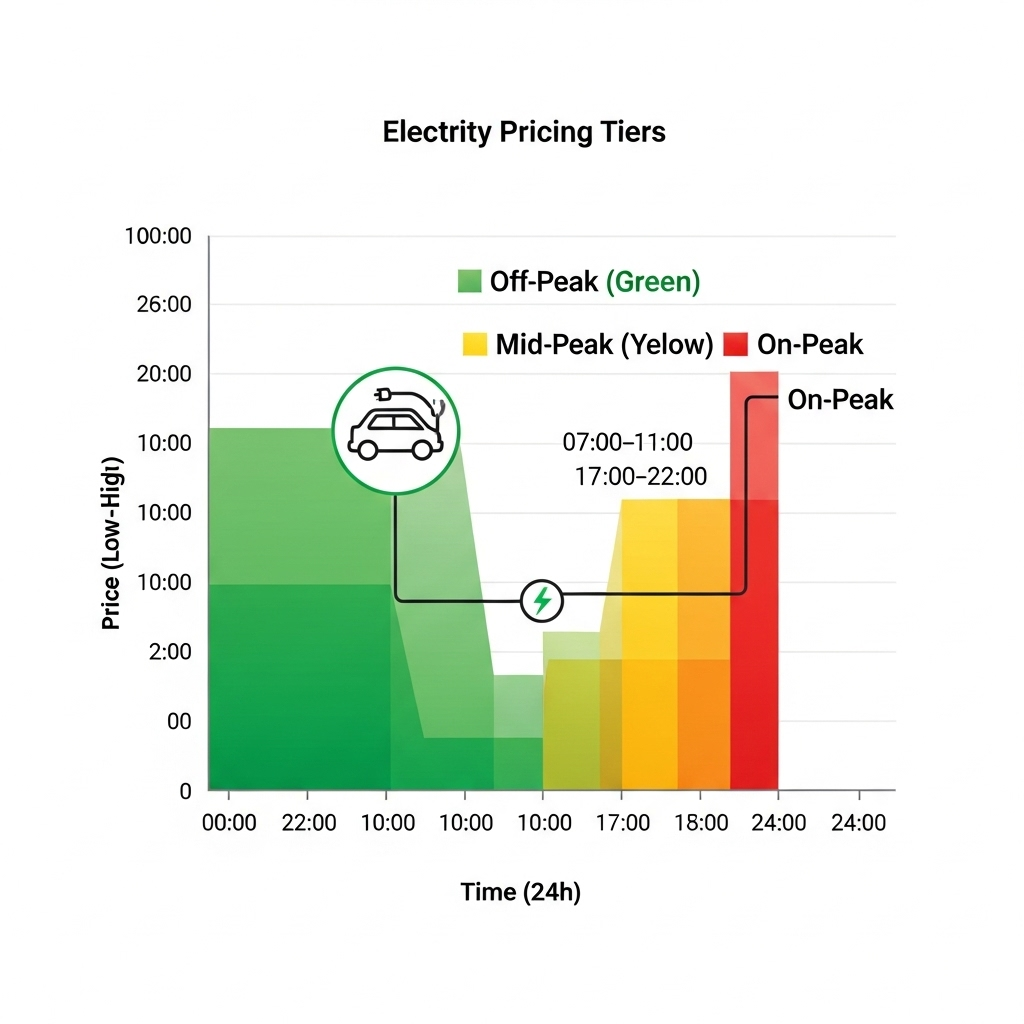Urban low-voltage (LV) grids are the final, critical link in delivering power to homes and businesses. These dense networks face constant pressure from growing electricity demand, aging equipment, and the rise of electric vehicles. The traditional response is to upgrade wires and transformers—a costly, disruptive, and time-consuming process. However, a smarter approach is gaining traction: Non-Wires Alternatives (NWAs). NWAs use solutions like battery storage, solar power, and demand response to defer or completely replace these costly infrastructure projects. Yet, misconceptions often cloud the discussion. Let's separate the myths from the realities of using these innovative non-wire solutions in complex urban environments.
Myth 1: Urban LV Grids Are Too Complex for NWAs
A common belief is that the intricate and dense nature of urban LV grids makes them unsuitable for the variable nature of distributed energy resources (DERs). The argument suggests that managing two-way power flows from thousands of small sources would be chaotic.
The Reality: Precision Targeting and Advanced Control
Modern NWAs are not blunt instruments; they are surgical tools. With advanced data analytics, utilities can pinpoint specific transformers or line segments that are approaching their capacity limits. Instead of a widespread, expensive upgrade, a precisely sized battery energy storage system (ESS) or a portfolio of distributed solar installations can be deployed to alleviate that specific stress point. The key is advanced technology. As demonstrated in projects supported by the U.S. Department of Energy, smart inverters are crucial. A study by EPRI, which laid the foundation for smart inverter technology, showed that these devices can autonomously manage voltage, improve power factor, and communicate with utility control systems, turning potential chaos into coordinated support.
The Reality: Modularity and Scalability
Traditional upgrades are monolithic. Replacing a substation transformer or underground cables involves extensive planning, permitting, and disruptive civil work. In contrast, NWAs are modular. You can install a 500 kWh battery system today and add another one next year if demand continues to grow. This incremental approach aligns capital investment much more closely with actual need, avoiding the risk of overbuilding and locking in high costs. This flexibility is a fundamental advantage in distribution planning, where future demand can be uncertain.
Myth 2: NWAs Are Unreliable for Critical Urban Loads
Another myth is that relying on intermittent resources like solar or finite resources like batteries is too risky for cities, where power reliability is paramount. The concern is that NWAs cannot provide the same steadfast service as a new, larger cable.
The Reality: Enhanced Resilience with Distributed Resources
This myth confuses base-load supply with grid support. NWAs often enhance reliability. A traditional grid, no matter how robust, is vulnerable to centralized points of failure. When a substation goes down, everyone connected to it loses power. Distributed resources create pockets of resilience. A prime example emerged from Hurricane Sandy in New York City. A report on the aftermath, EERE Success Story—Empire State Strikes Back, noted that hundreds of solar systems could not provide power during the blackout because they lacked battery storage. This event catalyzed efforts to pair solar with storage to create resilient systems for critical facilities like fire stations and shelters, which can operate independently during a wider grid outage.
The Reality: The Power of Aggregation and Smart Management
A single residential battery is a small resource. However, when hundreds or thousands of them are aggregated and controlled by a sophisticated energy management platform, they form a Virtual Power Plant (VPP). This aggregated system is highly reliable. The failure of one or two units has a negligible impact on the whole. The International Energy Agency (IEA) points out that the role of the distribution system is changing. In The Power of Transformation, the IEA explains that grids are shifting from passive, one-way systems to complex structures with two-way power flows. Smart management of these flows is what ensures reliability, allowing aggregated DERs to provide services just as dependably as a conventional power plant.
Myth 3: The Economics of NWAs Don't Work in Cities
The final major myth is that the cost-benefit analysis for NWAs simply doesn't add up, especially when compared to the known costs of traditional 'wires' solutions. This view is often based on an incomplete accounting of both costs and benefits.
The Reality: A Broader View of Value
An NWA investment does more than just defer an upgrade. This is a concept known as 'value stacking'. A battery system installed to relieve evening peak congestion can also:
- Provide frequency regulation services to the broader grid, generating revenue.
- Offer backup power to the building it's connected to, a valuable resilience benefit.
- Absorb excess solar power during the day, reducing reverse power flow issues.
The Reality: Declining Costs and Performance Gains
The economics of NWAs are a moving target, and they are moving in the right direction. The costs of key enabling technologies—solar PV and lithium-ion batteries—have fallen dramatically.
| Technology | 2013 Average Cost | 2023 Average Cost | Approximate Reduction |
|---|---|---|---|
| Lithium-ion Battery Pack | ~$700/kWh | ~$139/kWh | ~80% |
| Solar PV Module | ~$0.75/W | ~$0.25/W | ~67% |
Note: Costs are industry averages and can vary. Sources include BNEF and NREL.
Simultaneously, performance has improved. Understanding the specifics of battery performance, such as Depth of Discharge (DoD) and cycle life, is crucial for accurate economic modeling. As detailed in the ultimate reference on solar storage performance, modern LiFePO4 batteries offer superior cycle life and enhanced safety, making them ideal for long-term NWA deployments that require thousands of charge-discharge cycles.
Moving from Theory to Practice in Distribution Planning
The evidence is clear: Non-Wires Alternatives are a practical, reliable, and increasingly economical tool for modernizing urban LV grids. They are not a universal replacement for traditional infrastructure but a powerful complement that offers flexibility, resilience, and financial advantages. Embracing NWAs requires a shift in mindset for distribution planning. Planners must move beyond a passive model of simply serving load and adopt a more active approach to managing a dynamic, two-way grid. As the IEA recommends, it is time to 'review and revise planning standards' to reflect the new role of LV grids in a decentralized electricity system. By doing so, cities can build cleaner, more resilient, and more cost-effective energy networks for the future.
Disclaimer: This article is for informational purposes only and does not constitute financial or investment advice. Consult with a qualified professional before making any decisions related to energy projects.
Frequently Asked Questions
What exactly is a Non-Wires Alternative (NWA)?
An NWA is an investment or action that defers or replaces the need for traditional electricity grid infrastructure (like new power lines or substations). It typically involves using distributed energy resources (DERs) such as solar panels, battery storage, energy efficiency measures, or demand response programs to manage grid load.
Are NWAs only for large-scale utility projects?
No. While many NWAs are utility-driven, the concept can be applied at smaller scales. For example, a commercial building could install a solar and storage system to reduce its peak demand, which in turn reduces stress on the local grid. Aggregations of smaller residential systems can also collectively function as an NWA.
How do solar and battery storage work together as an NWA?
Solar panels generate the most power during the day, which may not align with the grid's peak demand (often in the early evening). A battery storage system can capture this solar energy and store it. Then, during peak hours, the battery can discharge this stored energy to serve local load, reducing the amount of power drawn from the grid and alleviating congestion on wires and transformers.
What is the biggest barrier to implementing more NWAs in cities?
While technology and costs are improving, regulatory and institutional inertia is often the biggest hurdle. Traditional utility planning and compensation models are built around large capital projects. Shifting to frameworks that properly value and compensate the services provided by smaller, distributed NWAs is a critical step. This includes updating interconnection rules, planning standards, and electricity tariff designs.





Leave a comment
All comments are moderated before being published.
This site is protected by hCaptcha and the hCaptcha Privacy Policy and Terms of Service apply.